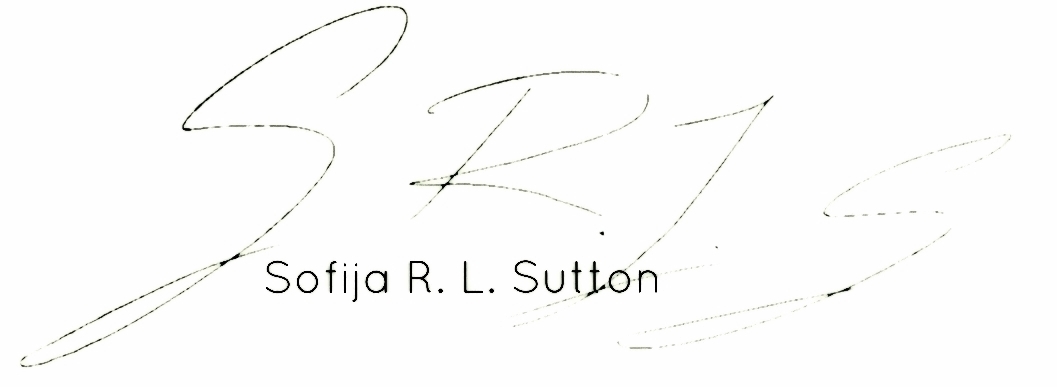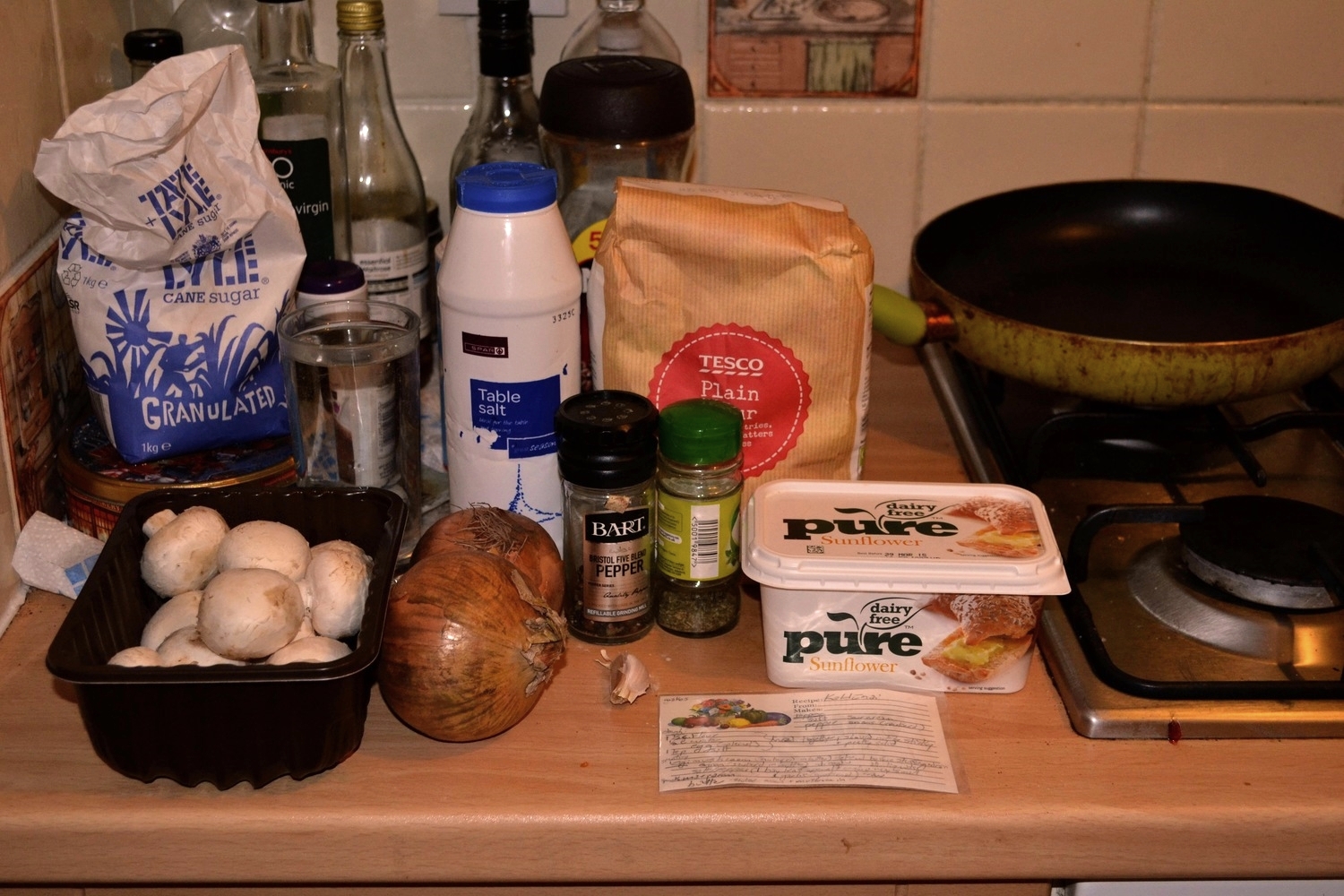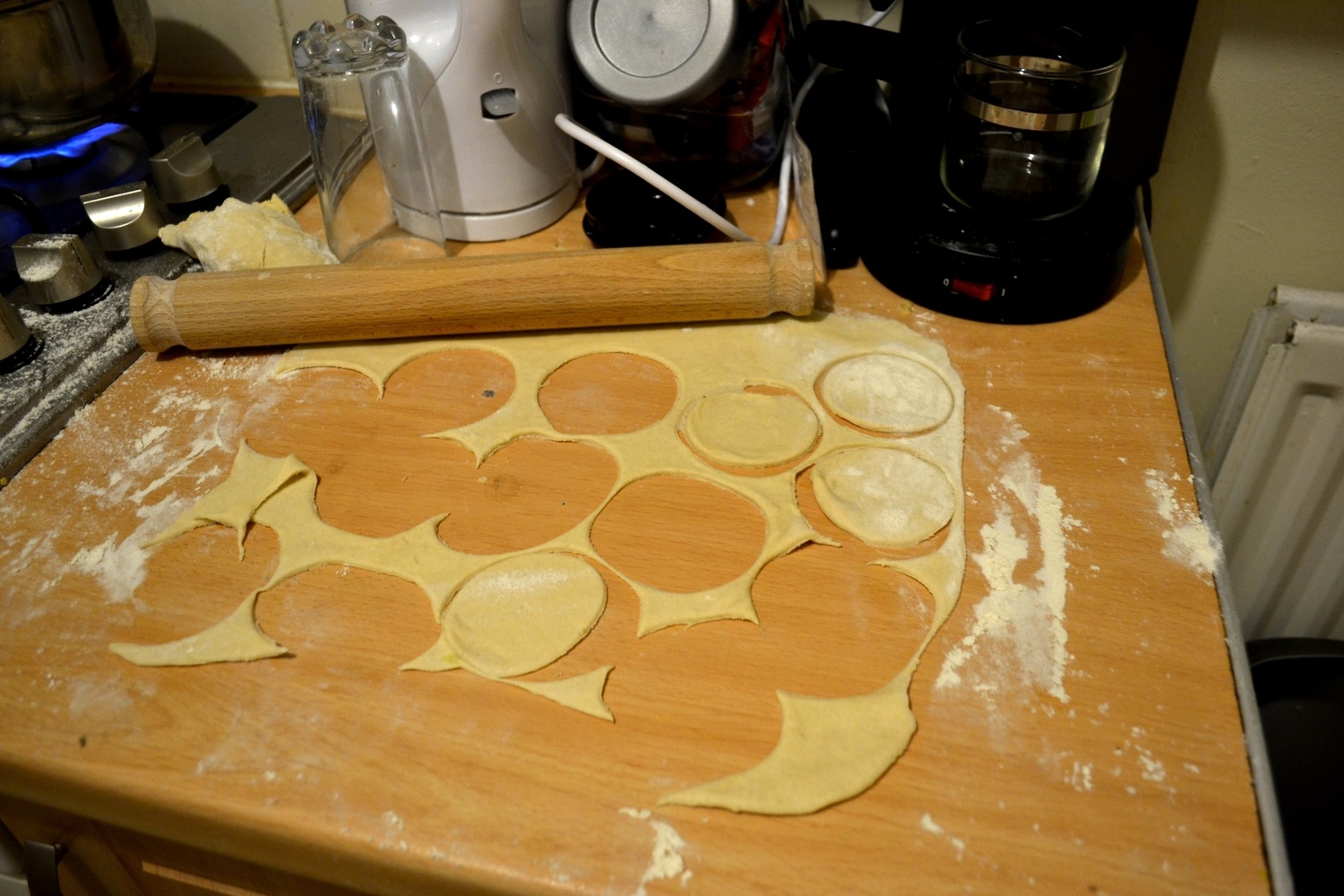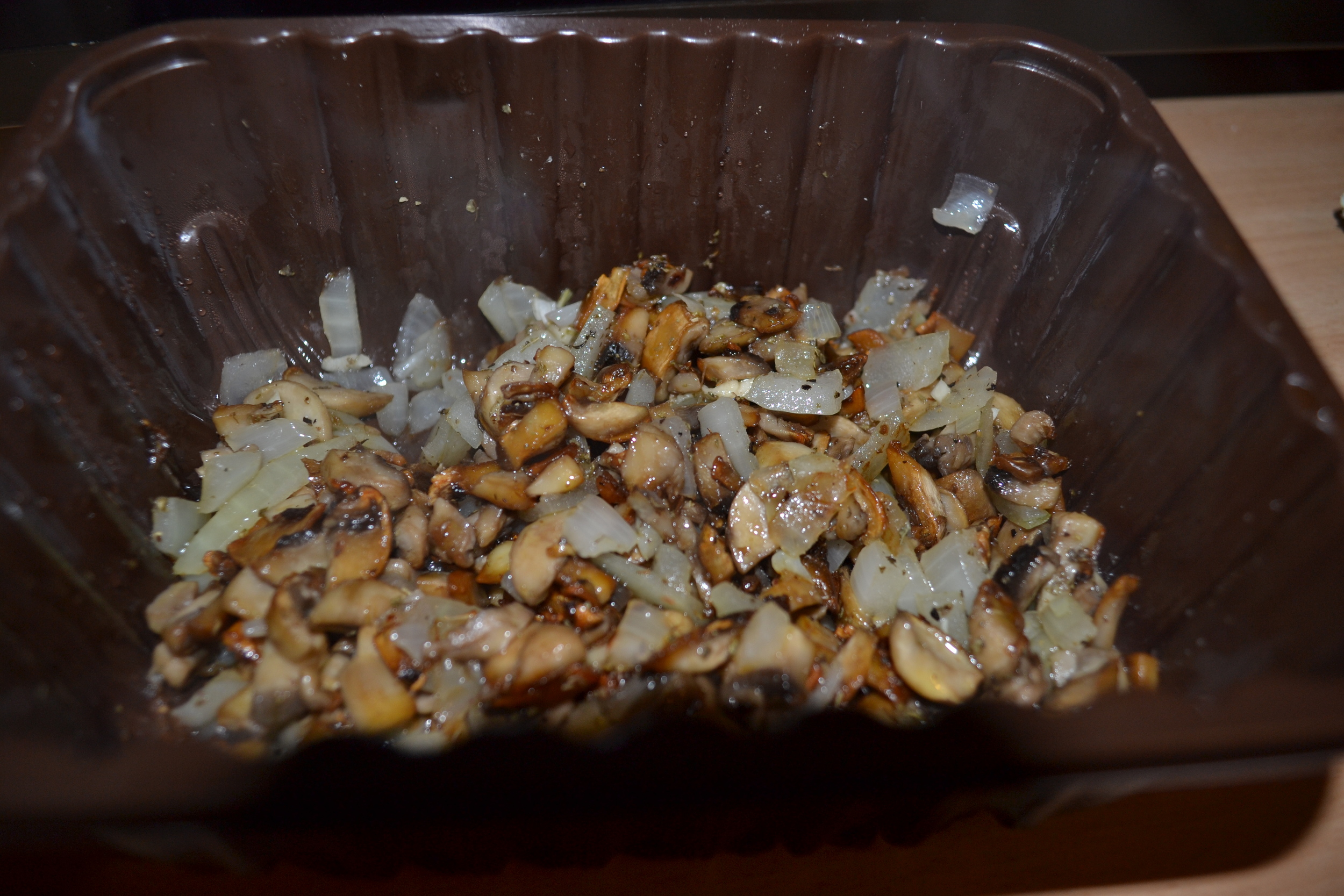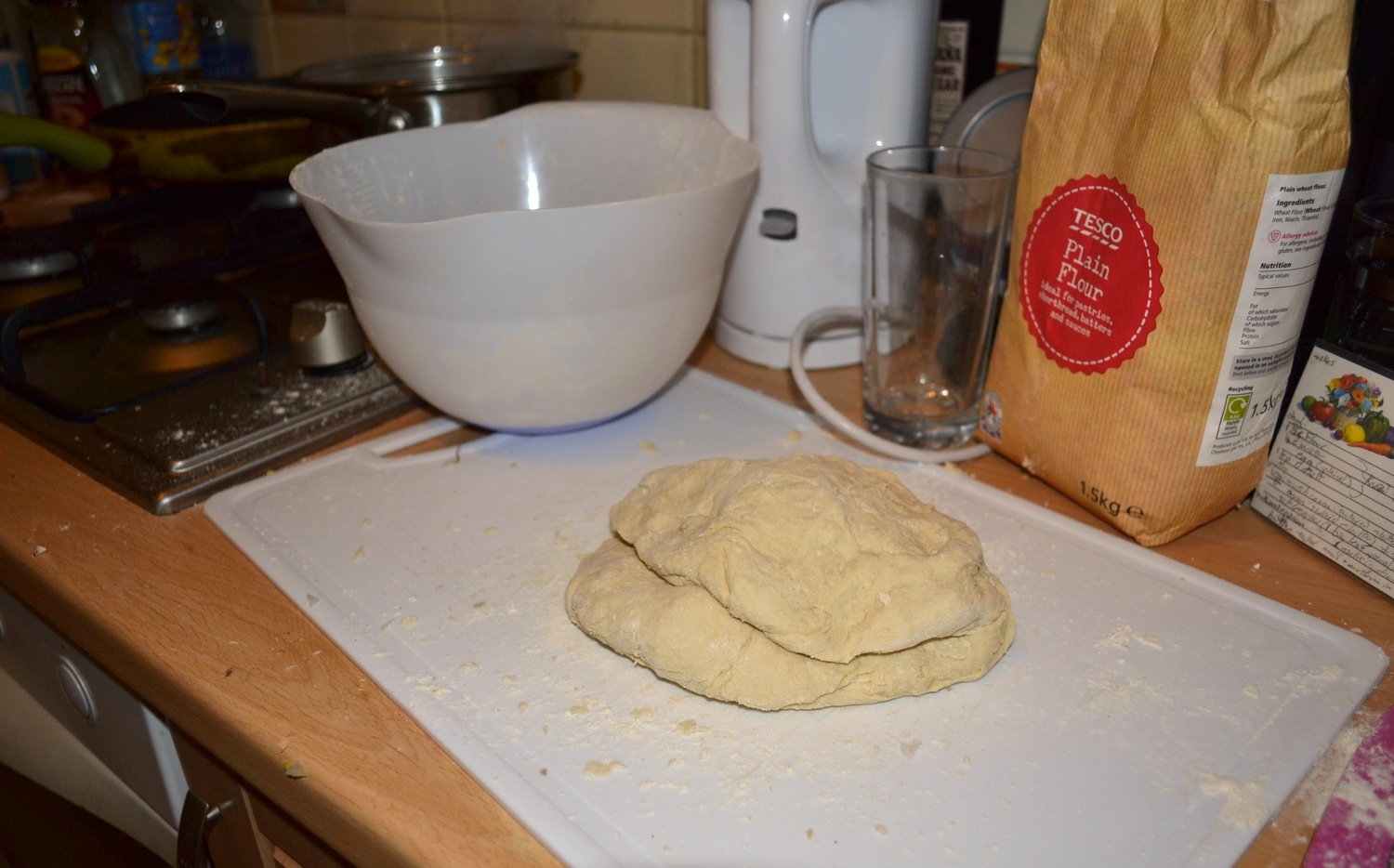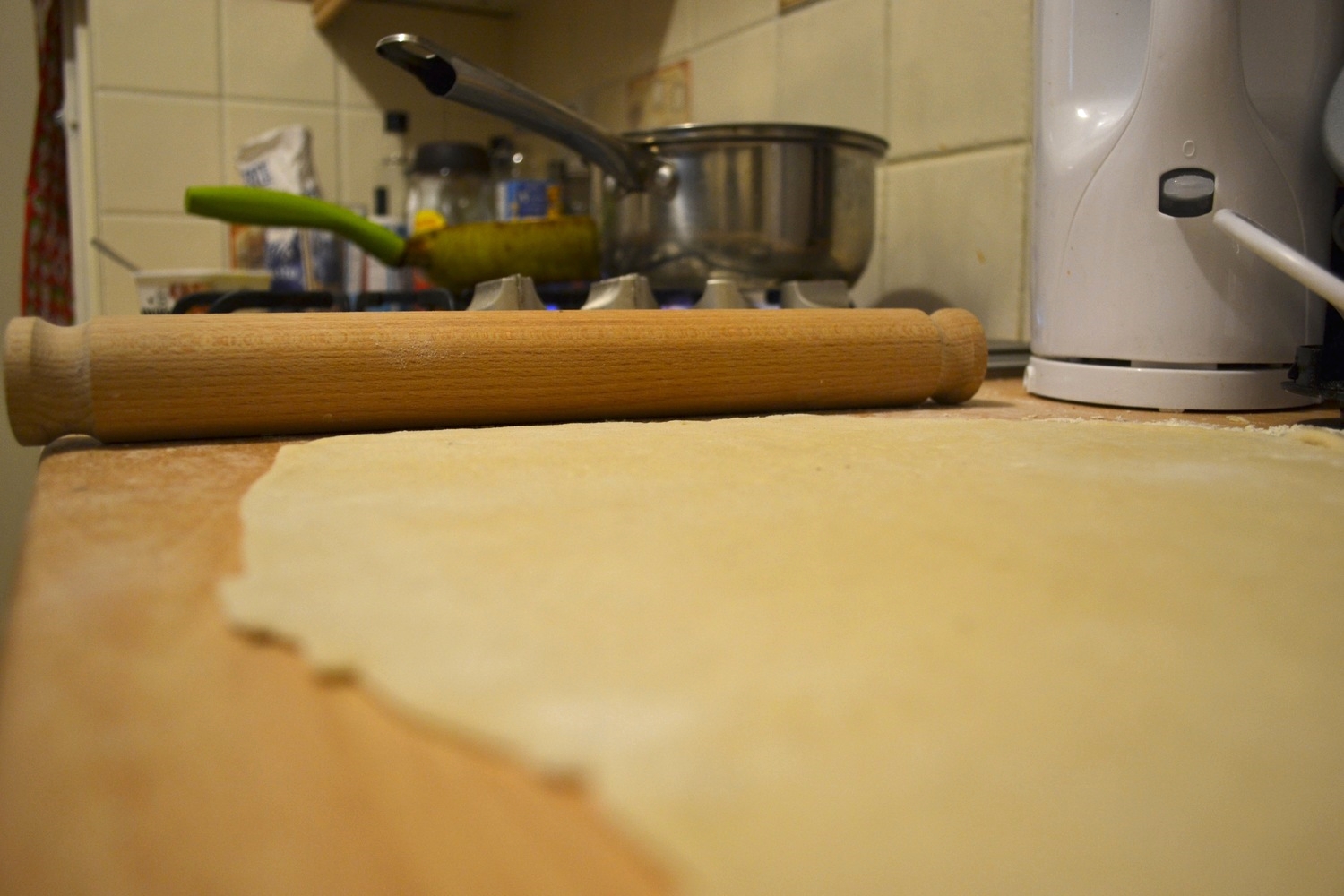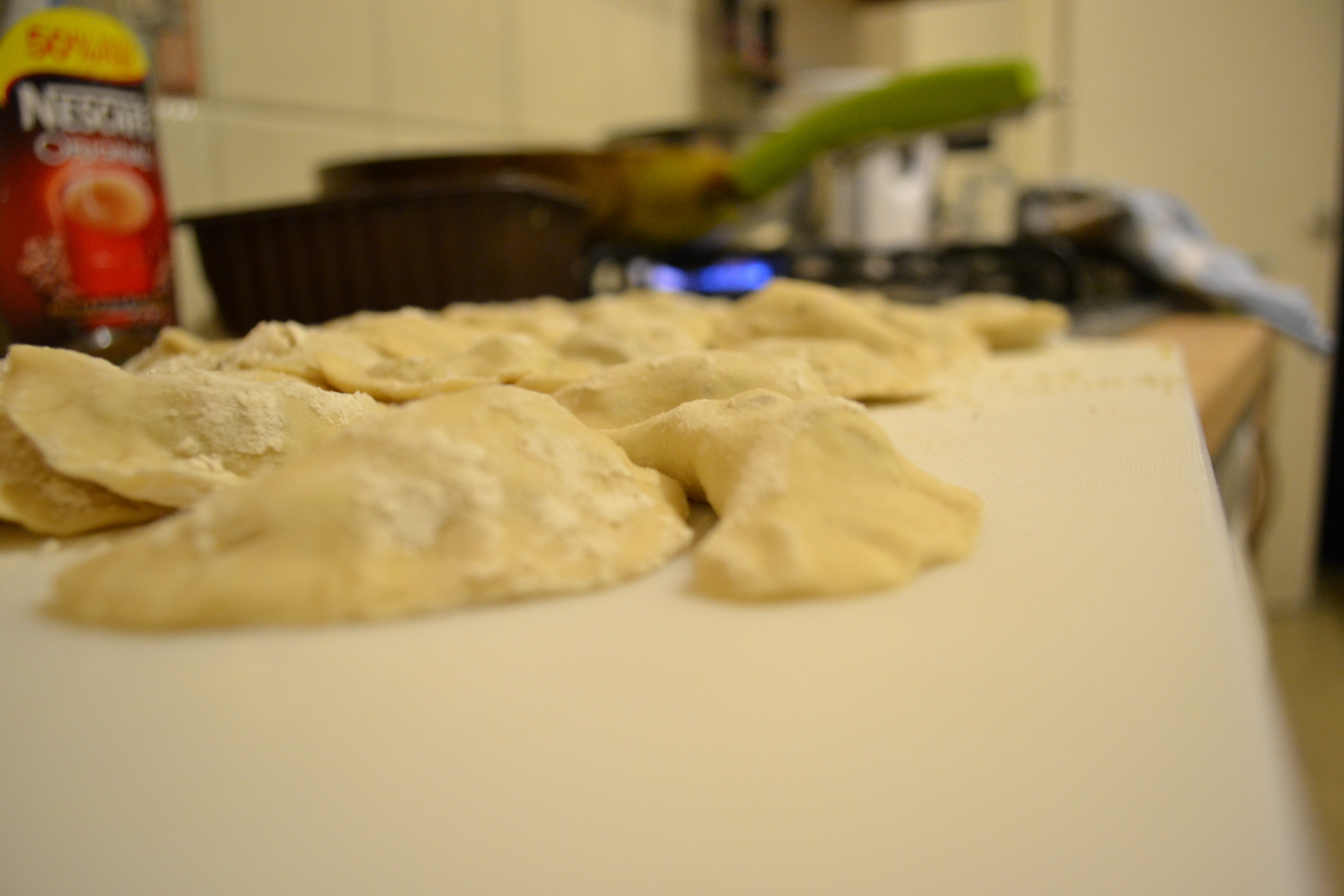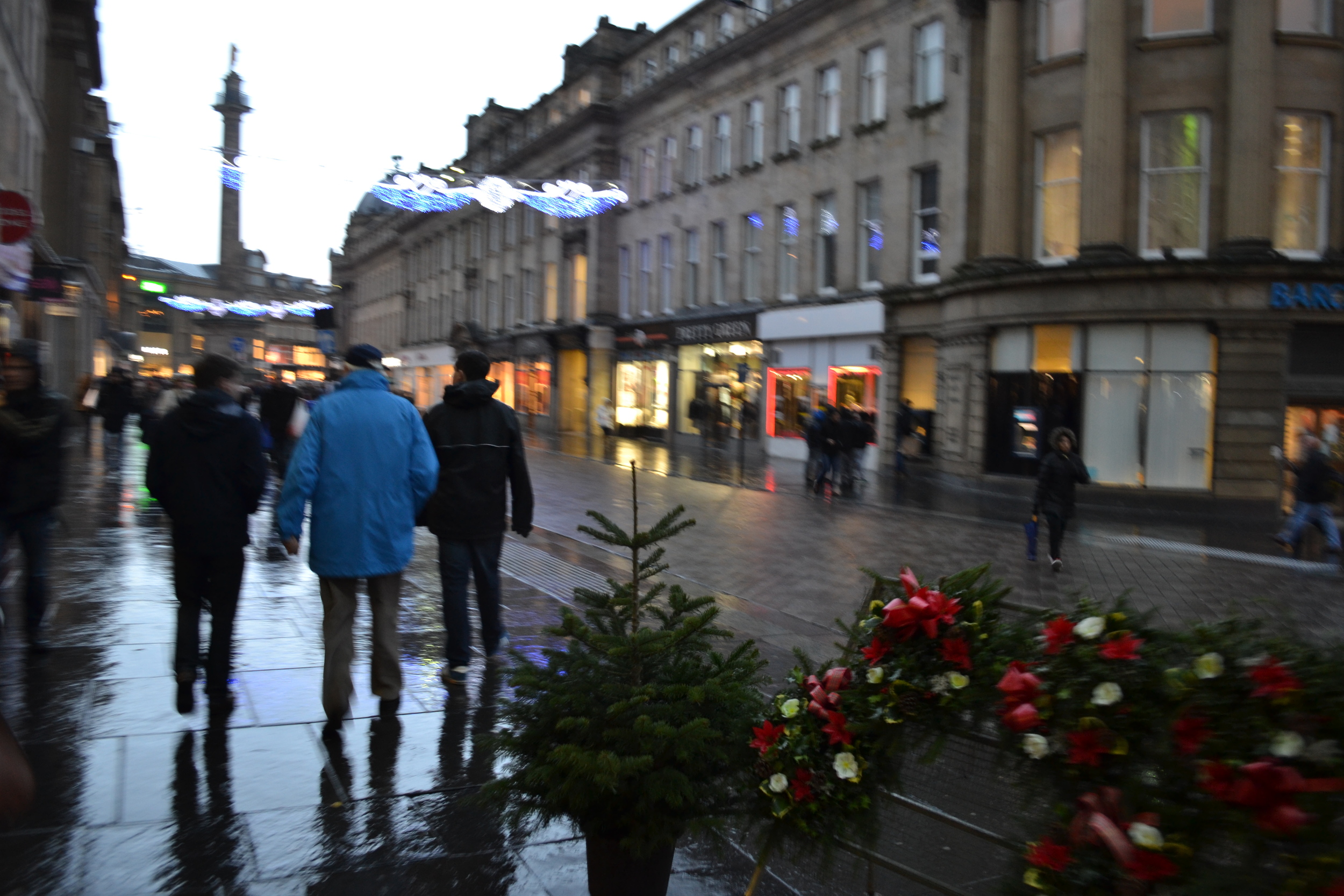Playing with Tradition - Making (Vegan) Lithuanian Kaldunai
Over Christmas break, I had the fortune to travel home and spend some time with my family. One evening, my mother took me to Maironis Park (Shrewsbury, Mass.) to learn to cook a proper Lithuanian dish from an old family friend starting up a casual, monthly cooking course. We made Kaldunai, or Lithuanian dumplings. These may be made from a few basic ingredients and for various occasions. They may be made with blueberries for desserts on Christmas Eve, mushrooms, pork, or anything you'd like. Most people in the class used a combination of pork and chicken, but being a non-meat eater, I made an onion and mushroom dumpling. This was made with butter, but I've now made my own (on my own!) completely vegan.
I highly recommend this recipe for those who like traditional, belly-warming foods: perfect for wintertime!
*Note - my gallery blocks are malfunctioning so the images are a bit out of order, but I think you can catch on.
Ingredients:
Dough:
1 1/2 c. flour
1/2 c. water
1 tsp. salt
1 egg optional - if you are a non-vegan, the egg makes the dough chewier but is frequently left out of the recipe
Filling:
1 carton mushrooms (plain white caps or choice of preference) -diced
1 yellow onion - diced
1 garlic clove - diced finely, raw
dash of marjarom (if you don't have this, a bit less of oregano or Italian spice mix will do)
salt and pepper to taste
vegan butter of choice (I like Pure's sunflower oil butter spread)
To start off, the mushrooms should be diced and fried in butter until a soft, warm brown and just a bit past. This should be done first since the mushrooms need to cool off before being stuffed. Be generous with the butter so the mushrooms may soak in all its buttery goodness. After this you want to drain any water cooked out of the mushrooms and set aside. Start frying the onion until it begins to soften and brown (do not overcook, you want some white remaining!) As this is cooking, you can set a large pot full of salted water to boil.
The dough is much easier than I expected, but a bit messy. As with much traditional cooking (like every recipe I ask for from my mother) it is 'to the eye.' I had doubled the dough recipe but ended up with way to much, so I cut the ingredients in half for this entry. All you need to do is put the flour, water, and salt in a bowl and knead it together with your hands. This will be sticky and messy but good fun. You should work the dough until it is decently solid and no longer sticky, if necessary add more flour. (Note: it will be sticky at first until the dough is worked for a few minutes) This process takes only about 10 minutes.
Check the onions and if they are done, pour half into the mushroom bowl. To this mixture, add a few dashes of salt, pepper, and a large dash of marjoram. I love salt and added more than the recipe called for, and would do so again. The marjoram really amps up the filling from tasting too plain and of bland mushroom. Mix in the garlic here as well. This then, again, should cool. The other half of the onions can keep cooking on low heat to a nice crisp. These will be used as a topping later on.
Now roll the dough, be generous with the flour to keep it from getting to sticky. You want the dough to be very thin, but not yet transparent. This about of dough with make about 35 small dumplings, about 3-4 servings. I eat a lot, but most people probably would only eat 8-9 in a sitting. After rolling, cut the dough using a glass cup and stuff the circles with the cooled down filling. It is okay if the filling is still a bit warm. Each circle will have a small teaspoon of filling, then should be folded in half and pressed closed. Be sure to really close the dumpling and score it with a fork or your nail to keep them from falling apart during boiling.
After filling the dumplings, sprinkle some flour on both sides to keep them from sticking in the pot. After dusting, you may cook them all or choose to freeze them. Once the water is boiling, add the dumplings to the pot. Like ravioli, do not over fill the pot or try to cook too many at once. The dumplings will sink; stir them gently. Once they all are floating, let them cook for five minutes. Since there is no meat to cook, the dough is all you need to worry about and can taste test. I would not cook over about 7 minutes.
Place the cooked dumplings in a colander or a paper towel to remove excess water, then plate up. This dish is normally topped with a mixture of onion and bacon bits, butter, and sour cream (healthy, I know!). I added more fake butter, salt, and the crispy onions. It was delicious, and this morning I fried some leftovers in oil. It is even better this way. Other than making too much dough, I think it turned out quite nicely.
Good luck making your own or daydreaming of warm, winter foods!
